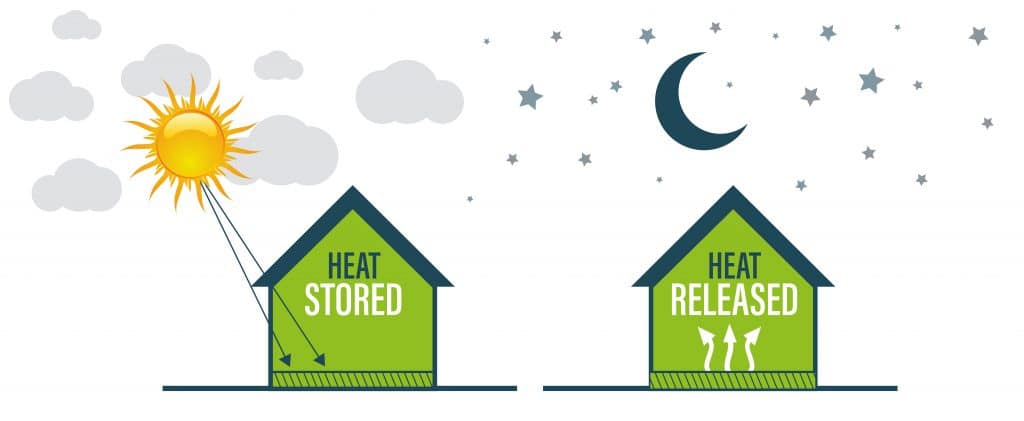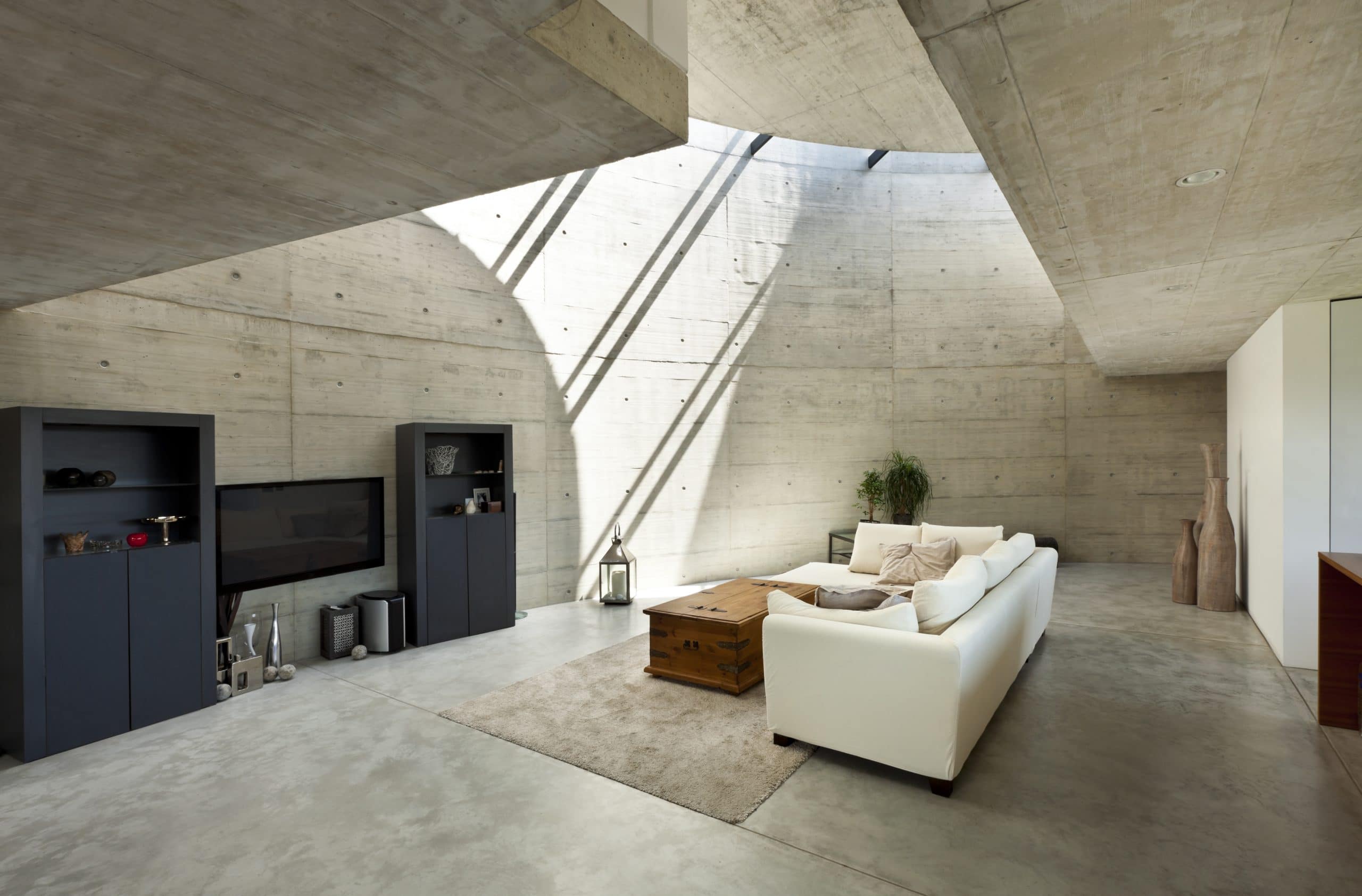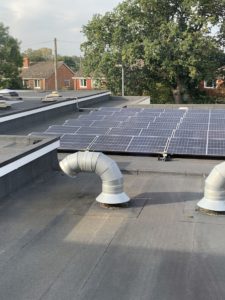Thermal mass can be a valuable and efficient way to absorb and store heat energy in a property. But how and why should we implement it to support the sustainable functionality of our development?
You know us; we’re always seeking out ways to be more energy efficient within new and refurbished builds.
It’s what Buildpass is all about. It’s our mission.
And we love sharing our most effective tools and methods with you. We genuinely believe that, together, we can build a more sustainable and environmentally aware society.
Today we’re exploring the concept of thermal mass; a simple way to have a huge impact on the energy storage of a property.
What is thermal mass?
Thermal mass applies to the ability of a material to take in and store heat energy. If a material has high thermal mass, it will require a good deal of heat energy to change its temperature. Those with low thermal mass will be lightweight and lose their temperature far more readily.
Essentially, strong thermal mass will be achieved by a material absorbing unwanted heat during the day and then releasing it again at night.

What materials are high in thermal mass?
Although this isn’t a one size fits all answer, typically you will find high levels of thermal mass in:
- Concrete
- Filled concrete block
- Stone
- Masonry
- Brick
- Tile
These materials share common factors, such as a high specific heat capacity, a high density and (at least) moderate thermal conductivity.
Each material will absorb different amounts of heat and will absorb and re-radiate it at varying speeds. Understanding the range of options and their impacts should be a key part of your building development process.
What are the benefits of thermal mass?
Thermal mass materials help you to maintain comfortable temperatures in the home throughout the day and all year round.
Used correctly, it moderates and averages out the extremes of temperature (for example, day compared to night). Not only will this keep your property heated appropriately, but it will also have a positive impact on your energy bills. It does this by:
- Maximising the benefits of solar gain, limiting the need for heating fuel
- Smoothing out fluctuations in internal temperatures
- Reducing peak temperatures thus making air-conditioning obsolete
- The cut in both heating and cooling fuels will also cut CO2 emissions
Despite these benefits, it’s important to remember that thermal mass is not a substitute for insulation; however, when used together it can deliver prime thermal outcomes.
Top tips for implementing thermal mass in your home.
- Don’t cover your thermal mass floor – if you’ve got a concrete slab floor and you put a carpet or vinyl over the top, you will immediately reduce the amount of sun radiation being absorbed. Leave it exposed (or tile it) to get the highest release of heat.
- Focus on your overall insulation first! If your home has poor insulation, thermal mass will have minimal impact and may even increase your energy use. Our blog is full of ideas about how to make your home more energy efficient.
- Direct sunlight is far more effective than diffused sunlight or warm air. An option could be exposing just a strip of your concrete slab across a sunny side of your room.
- Integrate thermal mass materials at the planning stage whenever possible. Although it is possible to swap materials, this can be more expensive and will require a fairly high level of engineering.
- For the best effect, include thermal mass inside the insulation of the building envelope. This will result in the most stable temperatures, minimal heating and natural ventilation.





















